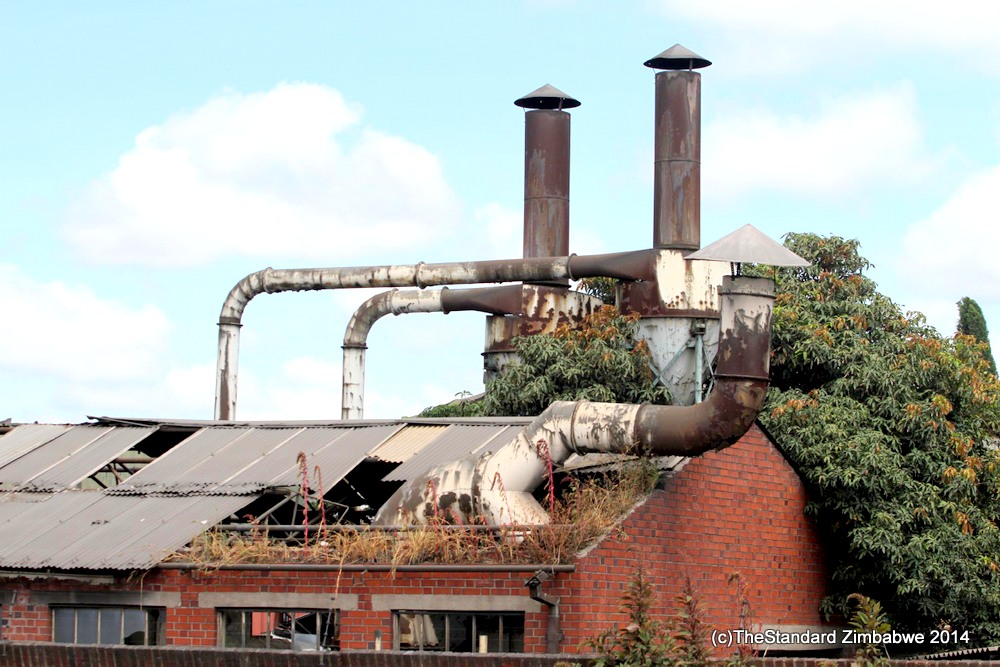
REPORT BY KUDZAI CHIMHANGWA
Long tufts of grass, and even trees, have outgrown the abandoned buildings while birds have come to roost in these eerily quiet environs that now form part of Zimbabwe’s industrial cemetery.
Old broken down haulage trucks are the new occupants of this once bustling space, disorderly strewn in the yard where self-employed motor mechanics appear to be attending to a small vehicle.

The huge dilapidating structures, carrying big chimneys that once upon a time used to spew out dark smoke 24 hours a day, are now a graveyard for massive constructs of steel — obsolete machinery that has largely turned brown from rust.
The only semblance of life here is the sight of the few trucks that move in and out of the yard, ferrying small heaps of a paraphernalia of goods to and from the city.The situation at this property is what most of Zimbabwe’s industrial areas now look like. What used to be a vibrant industrial hub of Africa has transformed, very fast, into what could best be described as Zimbabwe ruins — a result of debilitating economic meltdown, spurred largely by ill-thought out political policies.

The past decade has been characterised by massive capital flight that has manifested itself in unprecedented company closures and job losses of frightening proportions. Manufacturing has ground to a halt and the country has become a huge wholesale shop for neighbouring countries – which is why unemployment levels in Zimbabwe have surpassed 80 plus percent. The Workington industrial area which even in the early 2000 was a perpetual mass of clouds as factories ran non-stop, now resembles a ghost industry. Local economic analyst, Takunda Mugaga said the underlying cause of industrial collapse was the harsh operating environment where key utilities such as water and electricity were scarce and unreliable, extreme competition from foreign products, as well as lack of long-term funding to capitalise firms. “Another major cause is the unfriendly policies such as indigenisation which badly affected many manufacturing firms which were owned by whites,” said Mugaga. He said a depressed supply side with agriculture and mining was also creating shortages which constricted backward linkages.
“There is need to revise the indigenisation policy as Zimbabwe is not prepared to own 51% stake at this juncture. The land reform process has also not been executed thoughtfully and as a result, productivity has been low with companies in agro-processing suffering the most. Companies like Dairibord, Cairns, Olivine and David Whitehead among others are cases in point,” he said.
- Chamisa under fire over US$120K donation
- Mavhunga puts DeMbare into Chibuku quarterfinals
- Pension funds bet on Cabora Bassa oilfields
- Councils defy govt fire tender directive
Keep Reading
 Zimbabwe Congress of Trade Unions (ZCTU) president, George Nkiwane said the industrial demise painted a very gloomy picture for workers in the country.
Zimbabwe Congress of Trade Unions (ZCTU) president, George Nkiwane said the industrial demise painted a very gloomy picture for workers in the country.
According to a 2013 National Social Security Authority Harare Regional Employer Closures and Registrations Report, a total of 711 companies in Harare closed down, rendering 8 336 individuals jobless. This was in 2013 alone. Many more have since closed, especially since July 2013.











